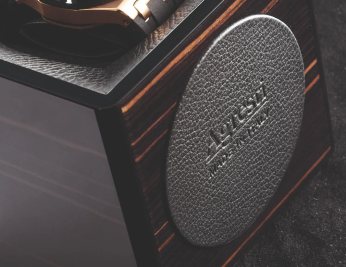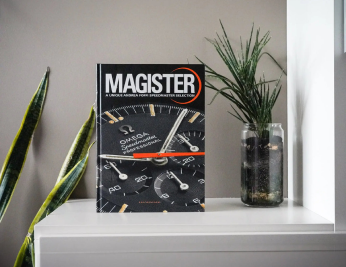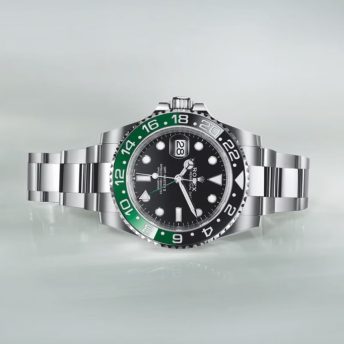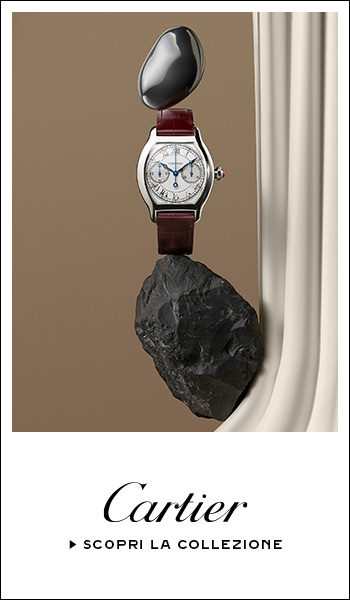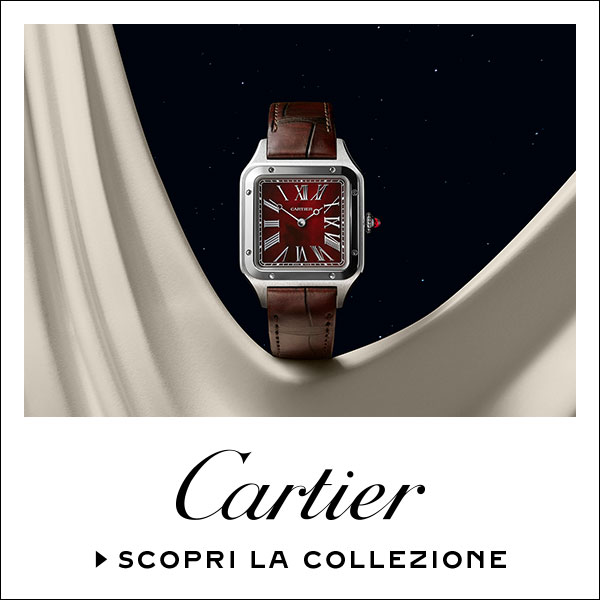If the name Crash de Cartier is unfamiliar to you, you’ve either been living in a parallel universe, or you’re just not that into watches.
Because, for quite some time now, the Crash has been riding on the crest of a wave that has touched quite literally everyone: its peculiar lines, the lore behind it, its famous celebrity co-signs… all these aspects have made the unique timepiece rise to stardom.
If you like Cartier do not forget to check out our article on this very rare Cartier Pasha
Why it’s worth writing and reading about
About 4 years ago, I met up with a dear friend of mine who worked at the Cartier boutique: a charming Frenchman who was very well read and spoken when it came to horology – someone who introduced me to a whole range of new things, one of them being Cartier.
I remember this encounter quite vividly: he was sat behind a sleek-looking desk, decorated with flowers, and behind him, framed posters and pictures of early Cartier timepieces hung from the wall. Out of this display of Cartiers, there was one which I simply could not take my eyes off of.
“That… is the Crash”, he said. It was nothing short of epiphanal: never had I seen something like this before. This was back when social media platforms like Instagram hadn’t really taken off yet, auctions like those of Phillips and Christie’s didn’t have that biblical impact like they do today, and – unfortunately – it was back when you could find exceptional timepieces for near-retail prices (sigh).
I was intruiged, so I asked him a little bit more about the piece; I began to read up on Cartier, and, in doing so, I began to fall in love with the Cartier brand.
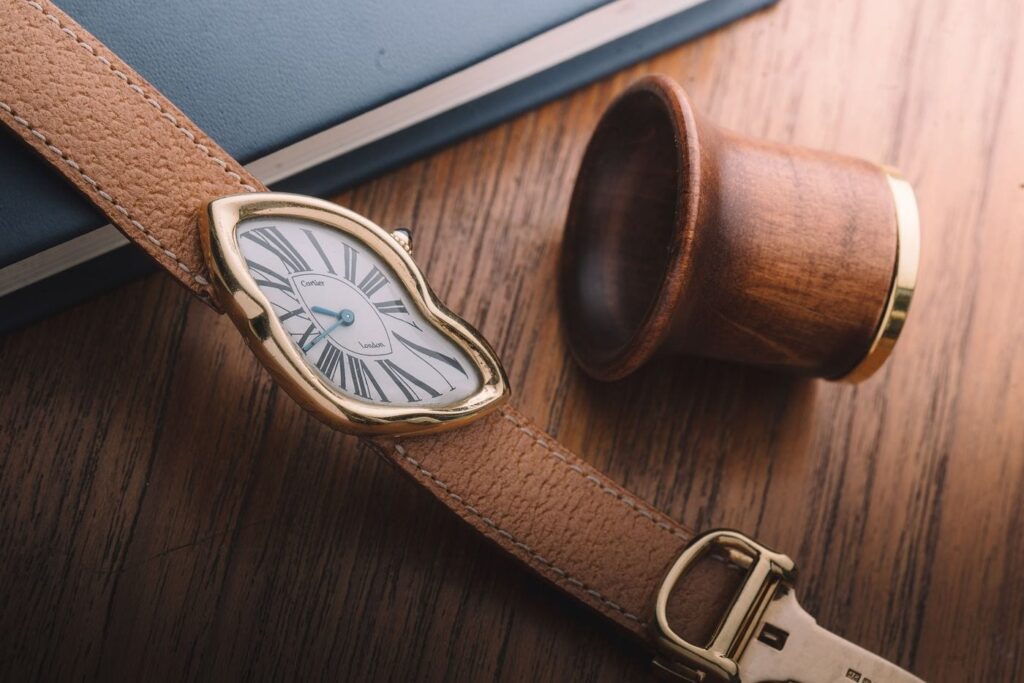
Years down the line and here we are: after having met people (pre-pandemic and even during – on Zoom, of course) who were fortunate enough to own a Crash, I find myself writing both a love letter to it and a guide for you all. It’s a story shrouded in mystery, and one whose origins are still hotly debated.
Personally, I think that the Crash de Cartier is, aesthetically speaking and design-wise, the single best watch of all time.
Without further delay, come find out the story of the Crash de Cartier!
London, 1960s
Not many people know that the Cartier brand, as we know it today, was in fact always this way. Many years ago, you had 3 options if you wanted to buy something from Cartier: London, Paris, or New York City. You see, each of these three major cities had their “own version” of Cartier. The different cultures, demands and zeitgeists of these world capitals led each of them designing, creating and selling their own types of products in their boutiques, yielding significantly different developments
Our story begins in London: the foggy, grey, but ever so elegant, formal, and dynamic.
If I were to ask you to think of a wristwatch that characterised the British capital, I wouldn’t be surprised if you were to reply with something along the lines of “classic, conservative, perhaps with a black or grey dial”, yet, in those years, London was undergoing somewhat of a cultural revolution. It was the sixties, after all.
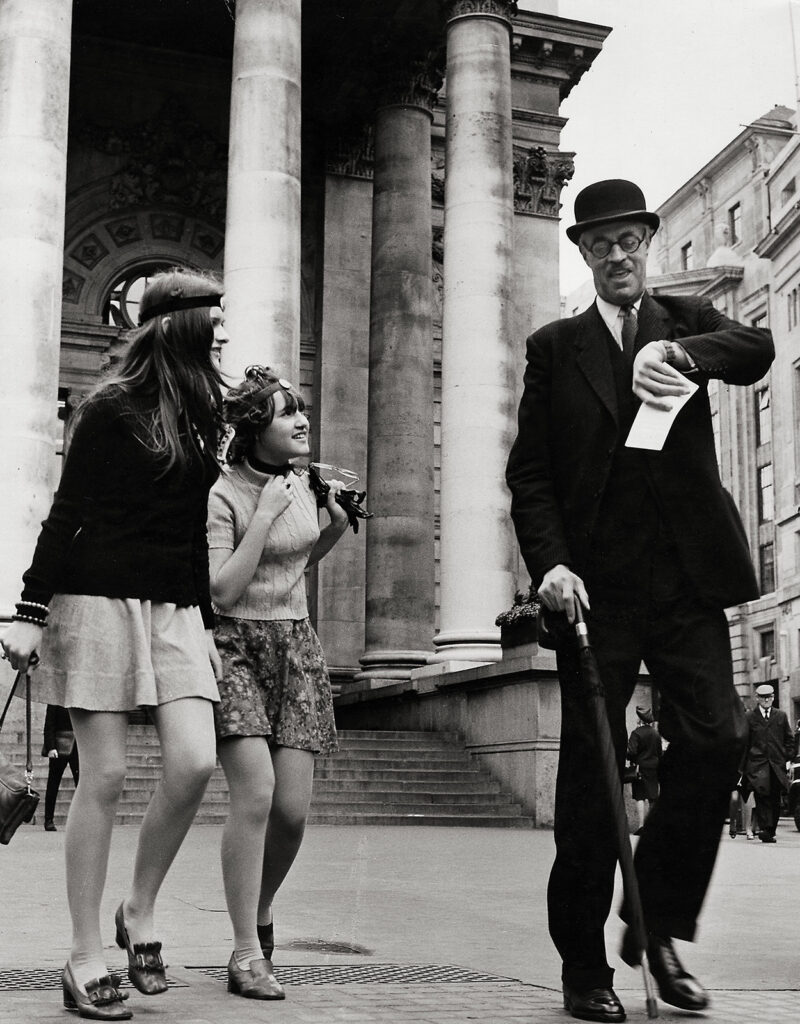
The Inspiration behind the piece: fact or fiction?
There are a few existential questions that have puzzled mankind for years now, like: “to be, or not to be?“; “which came first: the chicken, or the egg?“; but above all – “does the Crash come from a painting or a car accident?“
Undoubtedly, an instinctive reaction that appears in our heads when we first see the Crash is “artistic”… but why is that so?
The answer: Salvador Dalì’s masterpiece – “The Persistence of Memory”.
One common school of thought when it comes to the inspiration behind the Crash de Cartier is that it is simply a horological transposition, or translation, of the Spanish artist’s work.
I myself am hesitant to subscribe to this point of view, and nor are many others, however, it would be unwise to totally discredit this as one of the Crash’s origins, because the painting has resided in New York City’s Museum of Modern Art (MoMA) since 1934, so it is entirely possible that Jean-Jacques Cartier (owner of Cartier London until 1979) may have seen the painting in his frequent trips across the pond.
Although there is no definitive and irrefutable evidence that proves that “The Persistence of Memory” was responsible for the Crash, I think it’s fitting to put these two works of art side by side, in their own “league” of genius.
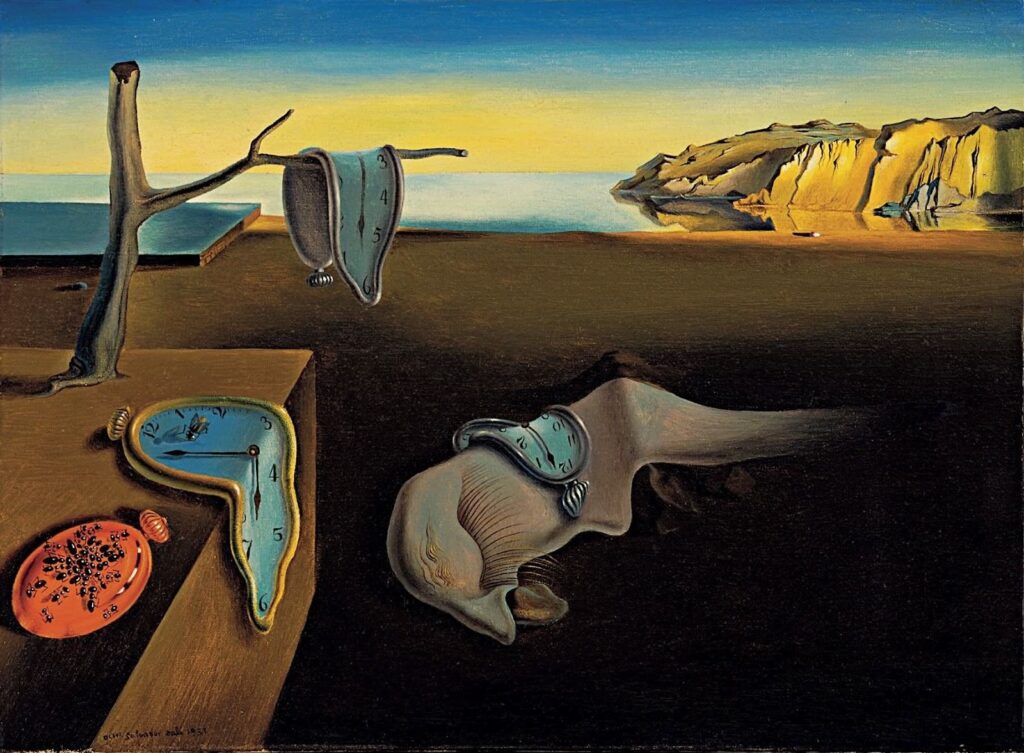
On the other hand, a widespread theory for the design of this iconic watch is that it actually comes from another model – the Baignoire (below) – but with a twist. The story goes that one of Cartier’s clients, was involved in a car accident (a Crash, if you will), and was wearing their Baignoire timepiece. After the car crash, the client made their way to the Cartier boutique, asking that their watch be brought back to life. The store director, upon seeing the damaged watch, whose lines were set awry from the flames, saw a totally new watch in its own right.
This was the, much more emotive and anecdotal story that I myself was told upon seeing the Crash for the first time. Although its name would suggest that this is the true origin for the timepiece, many experts and scholars reject this theory, citing that it was more likely (although I find it harder to believe than the automobile accident story) that it was just a pure stroke of genius.
Either way, I have to agree to some extent: the idea was nothing short of genius.
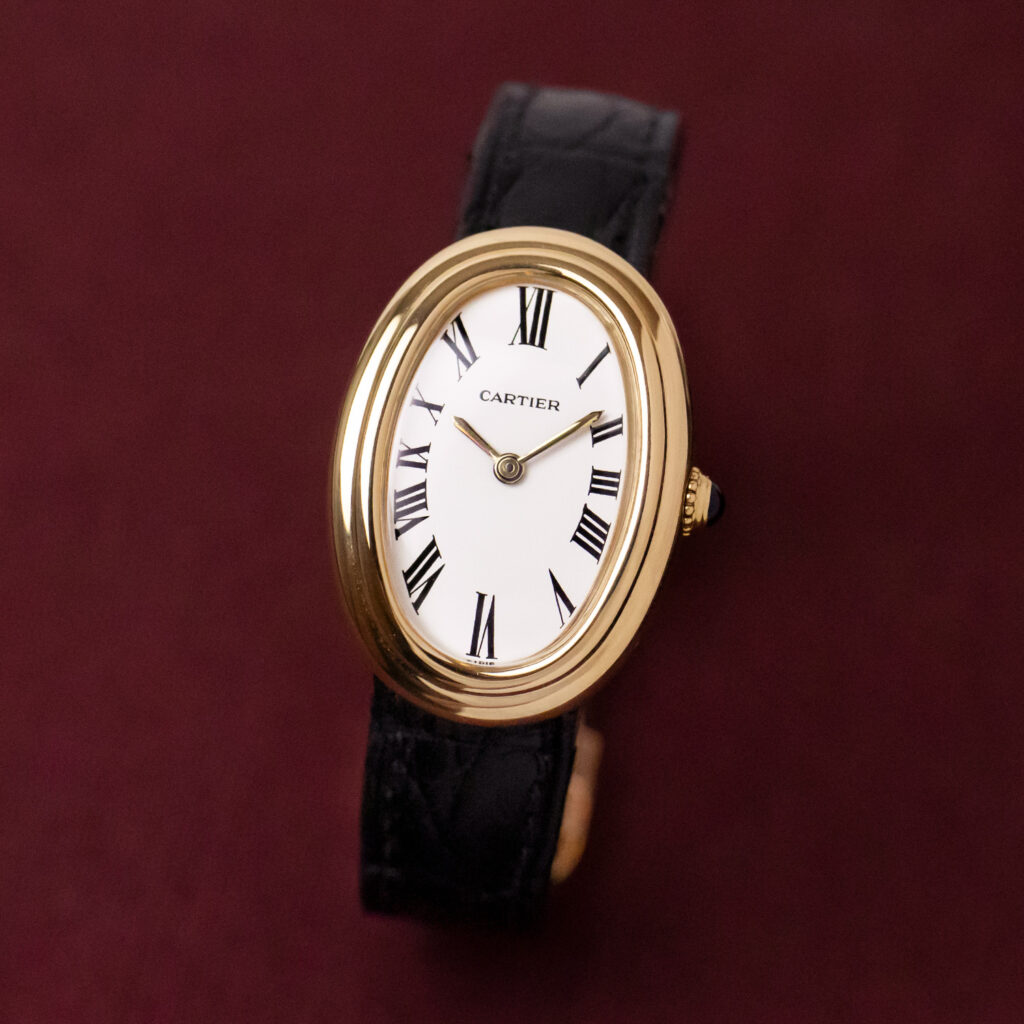
The Inspiration behind the piece: its creation
But there is one final, and far lesser known hypothesis when it comes to the Cartier Crash’s design: in her book “The Cartiers”, Francesca Cartier Brickell (descendant of Jean-Jacques Cartier) explains that the Crash came from the idea of taking an oval-shaped watch, “pinching it at one point, and molding it from the middle”, and that was precisely what her Grandfather did to engage clients with his creativity during the swinging sixties.
Jean-Jacques Cartier wasn’t the only person behind the mythical watch with mysterious origins, as it was the skill of Cartier London casemaker and designer Rupert Emmerson, which brought the watch to life, with the help of Jaeger-LeCoultre.
In her book, Francesca recounts how the Dalì-esque curves of the Crash didn’t come first time, but that there were multiple prototypes before the final product that weren’t up to Mr. Cartier’s standard of “imagination”. It wasn’t an easy task, either: I cannot even begin to think how difficult it must have been to achieve a design so complex and to have the hands always display the correct time, and manufacturing a movement which adapted to this unprecedented requirement, and could be assembled and serviced like any other watch.

Credits: The New York Times
Some Editions of the Cartier Crash
Early Crash London (1967)
The first London Crash was around 43mm (length) and 25mm (width), way more than many other Cartier watches. Each piece was made by hand as it was something new and special, a very exclusive timepiece we can say. Every dial was hand painted and the first models were powered by JLC movements (signed Cartier), supplied by New York.

Cartier Crash Paris (1991)
There are only 400 pieces of the Cartier Crash Paris. It is a smaller re-edition, with 38mm, opposed to the previous 43, with the “Paris” writing above the six. No more London here!
This one below is from our dear friends from AmsterdamVintageWatches
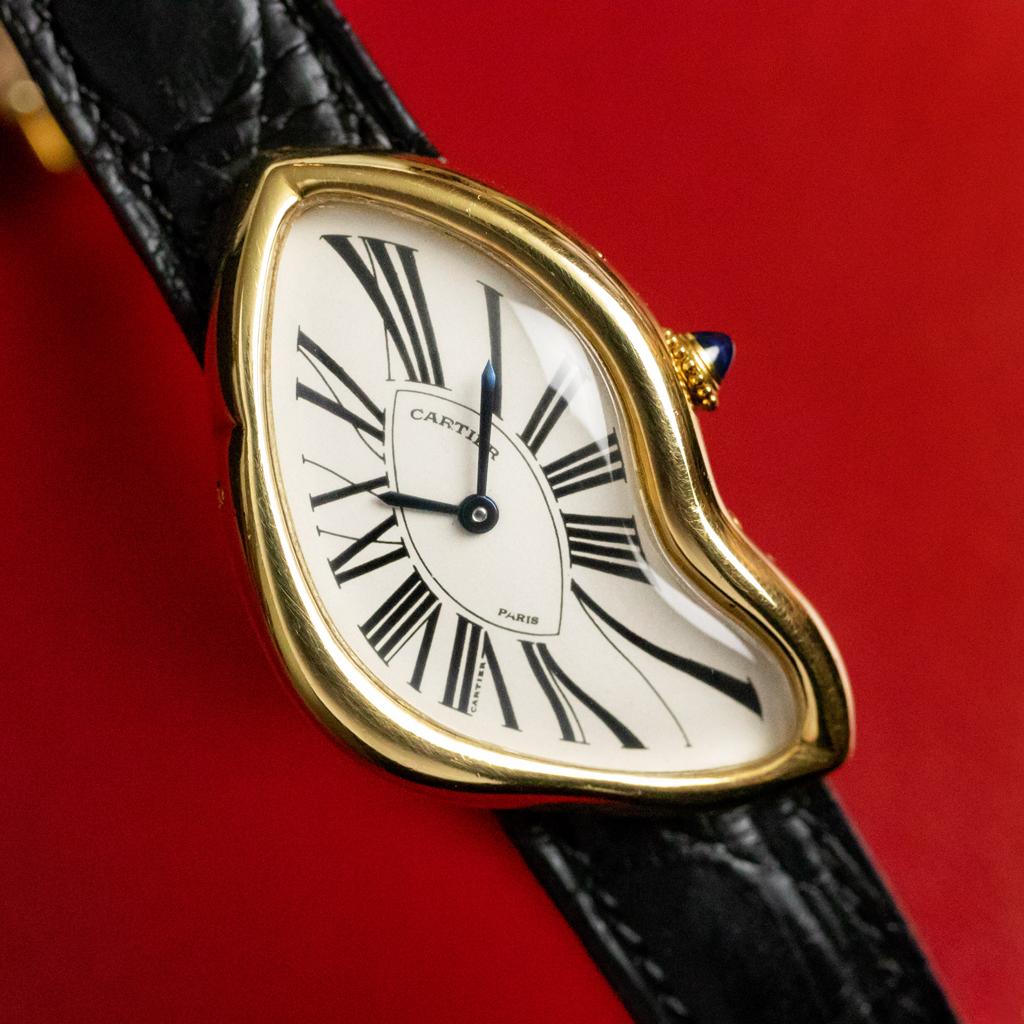
Crash “for Women” (2013)
It’s 2013 and Cartier presents at the SIHH an unseen version of the Crash, for the first time designed for a lady’s wrist. For the first time, in fact, we see a Crash with diamonds and a gold bracelet!
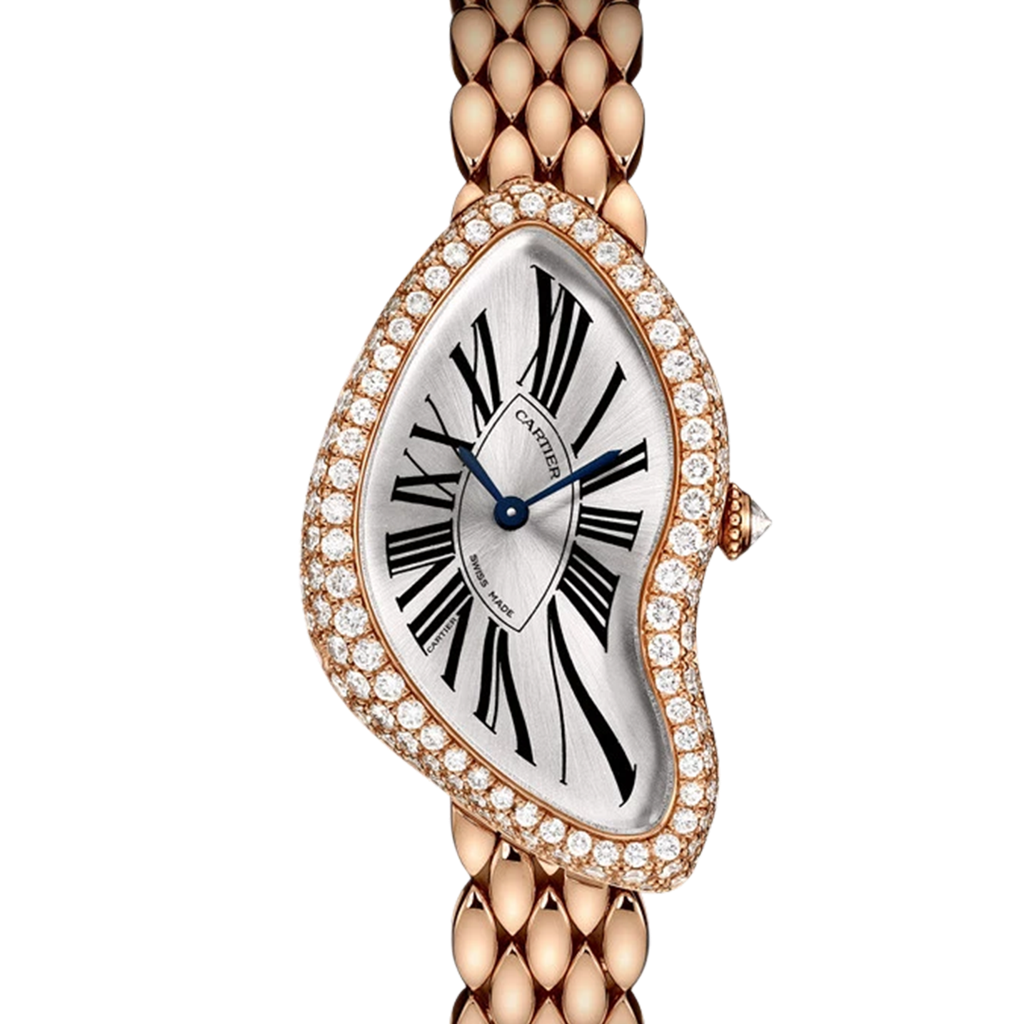
Cartier Crash Skeleton (2015)
Maybe the best execution of this watch, although I’m not a big fan. Here we have an amazing combo: mesmerizing technique with the skeletonization and sublime shapes with our beloved Crash. All in a single watch.
It’s 2016 and Cartier put up for sale only 67 pieces, and I’m pretty sure that they’ll be stuck in your head the moment you see them.

Cartier Crash Radieuse (2018)
50 pieces worldwide for what could be considered the quintessence of the Crash: the Radieuse. Do I like it? Not really, but it’s the absolute most particular Crash ever made. The graphics on the dial highlight the peculiar shape of the watch, and are remarked by the processing done on the bezel.
If the Cartier Crash is art in a watch, the Crash Radieuse is even more artistic. And he knows it.
The will of Cartier, in my opinion, was to astonish and mesmerize even more with the Crash, underlining it’s essence. Want to hear the icing on the cake? The diamond in the crown, for sure.
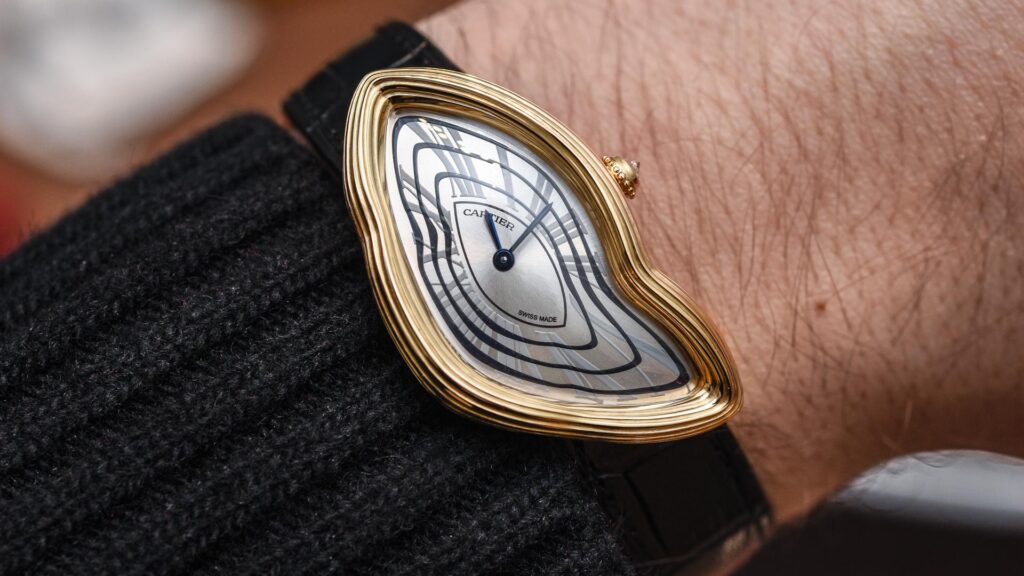
Cartier Crash Bond Street (2019)
Few words say it all: it’s back!
The historical Crash, the Crash from Cartier London, nothing but himself. Announced in 2018 and sold in 2019, this special watch celebrates the re-opening of Cartier’s Bond Street boutique, which distributed this watch until few months ago. Nothing really limited in numbers, but one piece every month, only one piece, and production has ended right now.
It obviously looks back to the original Crash, being the heir. The only true pitty? No London sign on the dial…
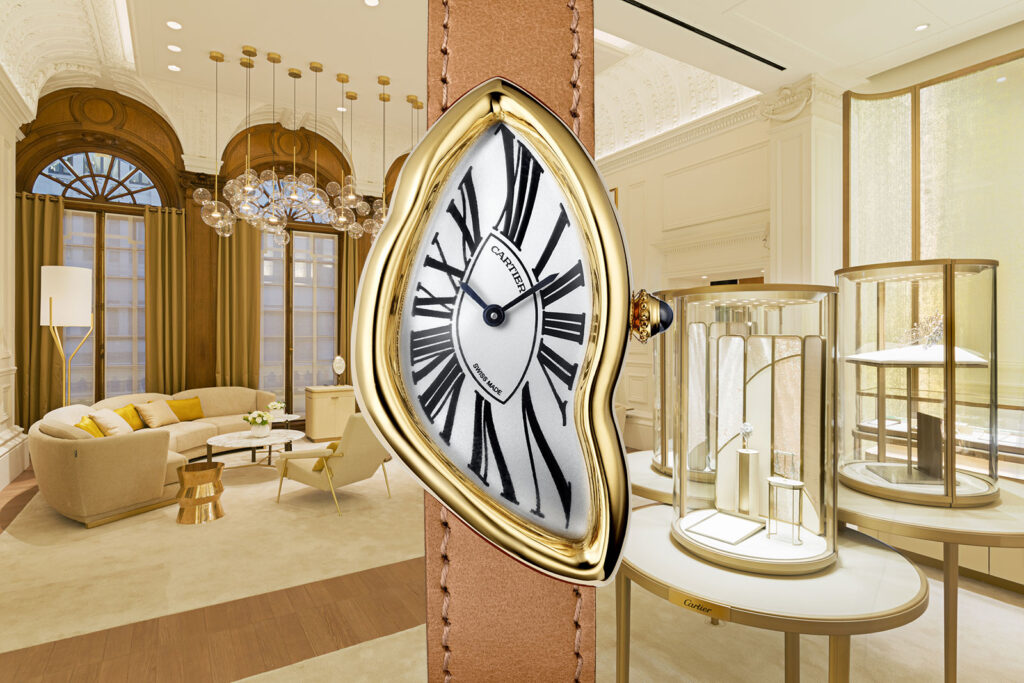
Cartier Crash: market and phenomenon
What surprised us all about this watch is its recent market diagram.
Few years ago, in fact, the Crash was very sought after, but just by a small niche of collectors. Today instead, as the late auctions testify, it reached some very high peaks, making him one of the real “big” ones.
The price has never been cheap, due to the essence of this special watch, but lately we’re experiencing how people are approaching the Crash with less fear and more money. Not long ago, in fact, we saw Christie’s selling a Cartier Crash London from ’90/91 for 225.000$, followed by 175.000$ by Phillips and other many similar results. On the same trend, the new Bond Street Cartier Crash is getting some attention, making it hard to find for reasonable prices compared to its list price (Phillips, circa 80.000€).
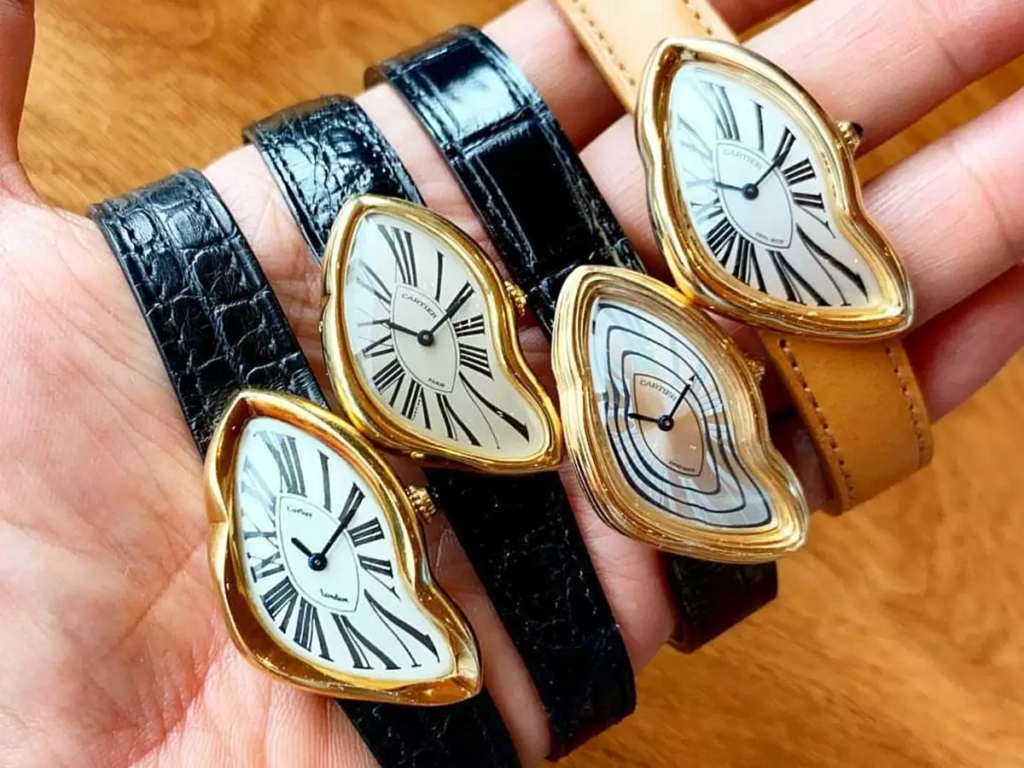
Apart from the figures, which we’ll analyze in the future, what I would like to point out is the reason behind this interest. I think it is fundamental to look at a watch for what it truly is: a vehicle for emotions. That is what makes them art, being the result of men’s genius and a great source of feelings and emotions. And which watch is better than the Crash in this?
I’m a bit sad about the recent interest in the Crash, but also happy. On one hand it’s more and more difficult to get one for a reasonable price, but on the other hand it is delightful to see that people are developing a great taste in watches, testified by the will to own a Crash.
And you? What do you think about it? Would you like to discover more about the watch?
– Translated by Patrick R.

